What Is Plywood?
Important Point
Considering all the building materials, Plywood has become one of the most eye-catching materials in the woodworking industry. Nowadays, because of the beneficial properties of plywood, they have become much more needed building materials than traditional materials such as natural wood, brick, plastic, etc.
Plywood is an amazing combination of light, strength, and flexibility. This is the main reason why the growth of the Plywood market is increasing day by day around the world.
Compared to wood, plywood is more readily and easily available in all regions. Due to the scarcity and cost of wood, Plywood has made its way to the construction industry in the last few decades ago.
Therefore, plywood is a versatile material. The cost of plywood varies depending on the structure and purpose. For a typical indoor workplace, one can use ordinary Plywood and for a specific purpose such as water resistance, use a standard waterproof Plywood that will have a higher cost compared to the regular one.
Now a day’s different grades of Plywood are available in the market, and one has to choose the right grade depending on his needs and work requirement.
Also, Read: Top 15+ Best Plywood Brands in India
Uses of Plywood:
- The uses of Plywood in the building and construction industries as well as the interior design have made it a world-famous building material.
- As the benefits of plywood are enormous, many companies around the world have begun producing soft, sturdy, thermal, and decorative Plywood.
Different types of Plywood have different uses.
- From furniture making to house building including building frame, door production, windows, drywall/partition, decorative materials, etc. Plywood is used.
- Many other sheets or composite panels are available in the market, but nevertheless, a professional or woodworker prefers Plywood because of its properties such as strength and stability, ease of operation, cost, etc.
Also, Read: WPC Board | Features of WPC Board | Disadvantages of the WPC board | Uses of WPC
What Is Plywood Used For?
- Plywood is very economical when used in construction projects such as floors, walls, partitions, forms, cabinets, shelves, etc. Because of its high strength and stability.
- Plywood is useful when using as flooring or concrete structure.
- Plywood is suitable for use as gussets for portal frames and as reinforcing panels and webs for columns made of a wooden structure.
- As Plywood is resistant to water and chemicals, it is therefore very popular in the chemical industry.
- Flexibility to the size and shape of the plywood makes it an ideal material in terms of wood. Such flexible plywood is especially useful for building furniture that is expected to have curved areas.
- Flexibility of plywood enables it for roof and paneling work, curved formwork, etc.
- In western countries, due to the need for high-temperature resistance, insulated plywood is preferred for installation as flooring, roofing, and wall cladding work.
Also, Read: Live Load Vs Dead Load | What Is Load in Civil
What Is Plywood Made of?
- Plywood is a type of engineering wood which is made by stacking several layers of wood veneers (thin slices of natural wood).
- A piece of Plywood is made up of tiny layers or “plies” of wood veneer that are joined or glued together and the adjacent layers having their wooden grains rotated up to 90 degrees from each other. According to basic terms, plywood is made by gluing wooden joints together to form a flat sheet.
- Pieces of plywood are formed differently depending on their intended use. For example, if plywood is to be used for construction purposes, it is pressed into large flat sheets.
- If plywood is intended for use in aircraft or in boat construction or furniture, it is formed into curves. Every layer of plywood has its grains running in right angles. This helps to keep the layer firm and durable while also limits any chance of shrinkage. The plywood itself is made up of at least three layers of wood that are held together by glue.
- The two outer areas of the plywood are called the back and the face. The back itself is hidden from the view while the face is one that can be seen. The inner layer is known as the backbone and if five or more piles are used, additional inner layers are considered as cross bands.
Also, Read: Floating Slab Vs Monolithic Slab | What Is Monolithic Slab | What Is Floating Slab
What is Plywood Made From?
The production of plywood requires a fine piece of log, called a peeler, which is usually straight and larger in size than the one needed to process the timbers with a sawmill. The log is placed horizontally and rotated in relation to its long axis while the long navel is pressed against it, resulting in a thin layer of wood (like a continuous roll of paper).
A flexible nozzle, which can be tightened or a roller, is pressed into the log during the rotation, creating a “gap” for the veneer to pass between the knife and the nose bar. The nose bar partly compresses the wood as it is stripped; controls the vibration of the flip knife, and helps to keep the veneer peeled to a precise thickness.
In this way the log is filtered into veneer sheets, which are then cut to the desired size, allowing it to shrink (depending on the type of wood) when dried. The sheets are then marked, divided, glued together, and baked in press at a temperature of at least 140 ° C (284 ° F), and at pressures of up to 1.9 MPa (280 psi) (but more often 200 psi) to form a plywood panel.
The plywood panel may have minor defects such as cracks or small knot holes which are filled, remodeled, sanded, or otherwise refinished, depending on the intended market.
Also, Read: What Is Crane | 18 Different Types of Cranes
Properties of Plywood:
Plywood properties are as follows.
- Plywood is used by experts nowadays due to its unique properties like.
- Plywoods have high strength and stability.
- Plywoods have high resistance to impact.
- Plywoods have resistance to fire, water, heat, and chemicals.
- Plywoods have flexibility in size, shape, and thickness which makes it fit for every requirement.
- Plywoods do not show any swelling, shrinking, and wrapping properties.
- Plywoods are more durable than natural wood.
- Plywoods are more cost-effective than natural wood.
- Plywoods are environment friendly and minimize wastage of wood.
Also, Read: How Are Bridges Built | How Are Bridges Constructed | Factors Associated with Building Bridges
Characteristics of Plywood:
The Plywood Characteristics that can be seen in plywood are given below.
- Plywood is a laminate, with several layers of wood and shavings placed on top of each other and glued together. The strength of the laminate is enhanced by the arrangement of each layer so the wood grain is alternated, making most types of plywood stronger than the same piece of real wood. Plywood is also almost twice as resistant to sheering as ordinary wood.
- Plywood is made of wood chips and shaving so wood chips can come from parts of trees that are not suitable for milling of beams, blocks, and boards. As a rule, that makes plywood cheaper than its equivalent to real wood, especially for larger-scale applications.
- The alternating grains and the use of adhesive make plywood stronger and more stable than conventional wood. Plywood sometimes does not like to absorb and/or emit moisture, and when it does, the alternating grain pattern resists an increase and decrease in size due to shrinkage. As a result, wood sometimes withstands shrinkage and warping.
- Plywood is a manufactured product so it is not limited in the same way real wood is in the size, shape, and appearance given by nature. Plywood sheets come in a variety of sizes and thicknesses as noted earlier and have a wide variety of surfaces. Plywood with a smooth veneer can be finished with many of the same finishing products used on real wood.
Also, Read: 21 Difference Between Gypsum Plaster and Cement Plaster | What Is Gypsum Plaster | What Is Cement Plaster
What Can Plywood Be Used for?
- Plywood is suitable for the floor of various buildings, including the heavy wear industry.
- In order to gain resistance to water and chemicals, the Plywood is treated with waterproof glue and other chemicals. This is known as Marine plywood.
- Marine plywood makes it ideal for furniture, concrete formwork, and garden furniture projects such as tables, chairs, benches, decorations, rugs, arbors, pergolas, planters, etc. However, it can be noted that all plywoods are not water-resistant.
- Plywood can also be used in making furniture, decorative items, etc.
- Plywood is suitable for use as fire-resistant materials.
Strength of Plywood:
- The Tensile strength of plywood is 27.6 to 34.5 Mpa.
- The Compressive strength of plywood is 31.0 to 41.4 Mpa.
- The Modulus of rupture of plywood is 0.0383 to 0.0689 Gpa.
- The Flexural modulus of plywood is 8.20 to 10.3 Gpa.
- The Shear modulus of plywood is 0.138 to 0.207 Gpa in-plane and 0.586 to 0.758 Gpa through-thickness.
- The Shear strength of plywood is 1.72 to 2.07 Mpa in-plane and 5.52 to 6.89 Mpa through-thickness.
Also, Read: What Is Fine Aggregate | Types of Fine Aggregates (Classification)
Applications of Plywood:
Plywood applications are as follows.
- Plywood has many applications depending upon the nature of construction work.
- Plywood is used as Floors, walls, and roofs in home constructions.
- Plywood is used as wind bracing panels.
- Plywood is used as the vehicle’s internal bodywork.
- Plywood is used in packages and boxes
- Plywood is used as Fencing around houses.
- Plywood is used in concrete shuttering panels.
- Plywood is used as ready to paint surfaces for constructions
- Plywood is used as panels in concrete formwork systems.
- Plywood is used as floors, walls, and roofs in transport vehicles.
- Plywood is used as container floors
- Plywood is used in floors subjected to heavy wear in various buildings and factories.
- Plywood is used as scaffolding materials.
- Plywood is used in making furniture, sports equipment, and musical instruments.
- Plywood is used as a Floor base, Structure panel, and Lamin board.
- Plywood is used in Kitchens and also in wet areas such as Boats.
What Is Plywood?
Plywood is a material manufactured from thin layers or “plies” of wood veneer that are glued together with adjacent layers having their wood grain rotated up to 90 degrees to one another. It is an engineered wood from the family of manufactured boards which include medium-density fibreboard and particle board.
Plywood Uses
- Exterior Wall Sheathing: Common wall construction on new homes, especially in North America consist of a 2′ x 4′ or 2′ by’ frame skinned in exterior-grade plywood sheathing. Plywood panels are used to fastened to each stud together to add strength and prevent vertical or horizontal shifting, keeping the frame’s structure intact and square. This technique forms a structure that performs well under high wind and during earthquakes due to its flexible properties
- Interior Walls: Certain types of plywood are good for wood paneling or framing interior stud walls. In most cases, the plywood will not be visible for the final finish however, some highly finished A-graded plywoods are very good for facing inwards and can painted or stained to give a stunning natural wood finish.
- Roofing and Flooring: Plywood is commonly used to sheath roofs and as a subfloor on many internal flooring projects.
- Other Construction: It’s not uncommon to find eaves and soffits covered with a plywood skin or made completely from ply. Some plywoods are made specifically for use as a siding product to appear similar to reverse board and batten siding.
- Furniture: Plywood can be a very practical and cost effective material for building furniture. In situations where one side needs to to look nice, a high grade plywood can be used whilst for the rest of the structure, a lower grade finish is fine.
- Cabinets: Plywood is great for making cabinet carcasses for kitchens, bedrooms and more.
- General Projects: Due to its versatility, plywood is great for many other home projects from building skateboard ramps, to rabbit hutches to doghouse. Home DIYers love plywood as it is ideal for building useful items including workbenches, sawhorses, simple step-stools, and storage bins. In fact, we’ve published a few easy DIY projects of our own using plywood sheets.
What Is Plywood Used for?
Plywood is used in many areas as a building material, for example, both indoors and outdoors. Plywood is also used for furniture sets, cabinets and tables . In general, it can be said that due to its high strength values, plywood is used wherever high stability is required.
Properties of Plywood
- High Strength and Dimensional Stability.
- High Impact Resistance.
- Panel Shear or Braced Panels Shear.
- Water and Chemical Resistance.
- Flexibility or Bendability.
- Fire Resistance.
- Sound and Thermal Insulation.
What Is Plywood Made of?
Plywood is a material (wood) manufactured from thin layers or “plies” of wood veneer that are glued together with adjacent layers having their wood grain rotated up to 90 degrees to one another. In the most basic of terms, plywood is made by combining wood veneers together in order to create a flat sheet.
What Is Plywood Made from?
Plywood is a material (wood) manufactured from thin layers or “plies” of wood veneer that are glued together with adjacent layers having their wood grain rotated up to 90 degrees to one another. In the most basic of terms, plywood is made by combining wood veneers together in order to create a flat sheet.
Plywood Characteristics
- High Strength and Dimensional Stability.
- High Impact Resistance.
- Panel Shear or Braced Panels Shear.
- Water and Chemical Resistance.
- Flexibility or Bendability.
- Fire Resistance.
- Sound and Thermal Insulation.
What Can Plywood Be Used for?
- Exterior Wall Sheathing.
- Interior Walls.
- Roofing and Flooring.
- Other Construction.
- Furniture.
- Cabinets.
- General Projects.
Strength of Plywood
A 12-by-36-inch piece of 3/4-inch fir plywood can easily support 50 pounds. However, a 12-by-36-inch piece of 1/4-inch thick plywood will not support that much weight. It will only support about 5 pounds before bending.
Plywood Applications
- Floors, walls, and roofs in home constructions.
- Wind bracing panels.
- Vehicle internal bodywork.
- Packages and boxes.
- Fencing.
- Concrete shuttering panels.
- Ready-to-paint surfaces for constructions.
Plywood Strength
A 12-by-36-inch piece of 3/4-inch fir plywood can easily support 50 pounds. However, a 12-by-36-inch piece of 1/4-inch thick plywood will not support that much weight. It will only support about 5 pounds before bending.
Also, Read: Difference Between Plinth Level, Sill Level, and Lintel Level.
| Mechanical Properties | Metric | English |
|---|---|---|
| Tensile Strength | 27.6 – 34.5 MPa | 4000 – 5000 psi |
| Modulus of Rupture | 0.0483 – 0.0689 GPa | 7.00 – 10.0 ksi |
| Flexural Modulus | 8.20 – 10.3 GPa | 1190 – 1490 ksi |
| Compressive Strength | 31.0 – 41.4 MPa | 4500 – 6000 psi |
Plywood Shear Strength
| Mechanical Properties | Metric | English |
|---|---|---|
| Compressive Strength | 31.0 – 41.4 MPa | 4500 – 6000 psi |
| Shear Modulus | 0.138 – 0.207 GPa | 20.0 – 30.0 ksi |
| 0.586 – 0.758 GPa | 85.0 – 110 ksi | |
| Shear Strength | 1.72 – 2.07 MPa | 250 – 300 psi |
Plywood Young’s Modulus
| Panel | Density – ρ – (kg/m3) | Modulus of Elasticity – E – (GPa) |
|---|---|---|
| MDF – Medium Density Fiberboard | 700 – 900 | 3.6 |
| Particleboard | 600 – 800 | 2.8 – 4.1 |
| OSB – Oriented Strandboard | 500 – 800 | 4.4 – 6.3 |
| Plywood | 400 – 600 | 7 – 8.6 |
What Is Cdx Plywood?
What is CDX? CDX is veneer plywood, which is manufactured by gluing and pressing together sheets of wood. The letters C and D represent the grades of either side of the plywood, while X stands for exposure.
Uses of Plywood
The followings are the major plywood uses:
- Exterior Wall Sheathing: Plywood is a common type of exterior wall sheathing.
- Interior Walls: There are a few advantages to using plywood as interior walls.
- Roofing and Flooring
- Construction Material
- Furniture
- Cabinets
- DIY Projects
- Space Shipping and Aviation
What Is Stronger Osb or Plywood?
Osb is stronger than plywood in shear. Shear values, through its thickness, are about 2 times greater than plywood. This is one of the reasons osb is used for webs of wooden I-joists.
Plywood Uses and Properties
High Strength and Dimensional Stability
Plywood is an extremely versatile material and can be used for a variety of applications, including flooring, wall panels, and roofs. It is also one of the most dimensionally stable wood products available, meaning it is less likely to warp or shrink over time.
Application of Plywood
The most prominent use of plywood is in structural applications. Plywood can naturally withstand a lot of stress and full weather exposure. Structural plywood is best used for beams and hoardings, but it is commonly used in crates, bins, internal structures, outdoor furniture, and boxes.
Common Uses of Plywood
Usually, exterior plywood is used for walls, roof lining, and walls. Interior plywood is used for more design purposes. You’ll find that interior plywood is used in many furniture pieces, ceilings, and cladding.
Plywood Mechanical Properties
Here are some of the mechanical properties of plywood:
- Strength: Plywood is stronger than solid wood due to its cross-grain construction. It can resist bending, twisting, and warping forces better than solid wood.
- Stiffness: Plywood has a high modulus of elasticity (MOE), which means it is stiff and can resist deformation under load.
Impact resistance: Plywood is able to withstand impact and shock better than many other building materials. - Shear strength: Plywood has high shear strength, which is important for resisting lateral forces, such as wind or seismic loads.
Tensile strength: Plywood has high tensile strength, which means it can resist forces that pull it apart. - Compression strength: Plywood can withstand high compressive forces and is commonly used in construction for applications such as flooring and roofing.
Plywood Information
Plywood is a type of engineered wood that is made by bonding together thin layers or plies of wood veneer. Each layer is placed perpendicular to the previous layer, and this alternating direction creates a cross-grain pattern that gives plywood its strength and stability. The number of plies used can vary, but typically range from 3 to 13.
Plywood Properties and Uses
Hardwood plywood is characterized by its excellent strength, stiffness, durability and resistance to creep. It has a high planar shear strength and impact resistance, which make it especially suitable for heavy-duty floor and wall structures. Oriented plywood construction has a high wheel-carrying capacity.
Plywood Yield Strength
The yield strength of plywood can vary depending on the type of wood used, the number of plies, the thickness of the plies, and the adhesive used to bond the plies together. The yield strength is the amount of stress that a material can withstand before it begins to deform plastically, which means that it won’t return to its original shape when the stress is removed.
Plywood Compressive Strength
The compressive strength of plywood refers to its ability to resist being crushed under a compressive load. Like other mechanical properties of plywood, the compressive strength can vary depending on factors such as the type of wood used, the number of plies, the thickness of the plies, and the adhesive used to bond the plies together.
Explain the Composition of Plywood
Plywood is a building material consisting of veneers (thin wood layers or plies) bonded with an adhesive. There are two types of plywood: softwood plywood and hardwood plywood. Softwoods generally correspond to coniferous species. The most commonly used softwoods for manufacturing plywood are firs and pines.
Plywood Advantages
Plywood offers the following benefits:
- Increased stability. Plywood offers all the inherent advantages of the parent wood plus enhanced properties in its laminated
- structure.
- High impact resistance.
- Surface dimensional stability.
- High strength to weight ratio.
- Panel shear.
- Chemical resistance.
Like this post? Share it with your friends!
Suggested Read –
- Acp Boards
- Smooth Wheel Roller
- Top 10 Cement Companies in USA
- Top 10 Best Cement Companies In India 2021
- Top 10 Bathroom Fittings & Sanitary Brands India
- What Is Grouting | Types of Grouting | Advantage of Grouting
- What Does Parapet Mean | Types of Parapet Wall | Uses of Parapet Wall
- Cinder Block Vs Concrete Block | What Is Cinder Blocks | What Is Concrete Blocks
- Monolithic Definition | Monolithic Footing | Monolithic Slab Foundation | Advantages & Disadvantages of Monolithic Slab Foundation | Monolithic Slab
Originally posted 2023-04-30 19:05:43.
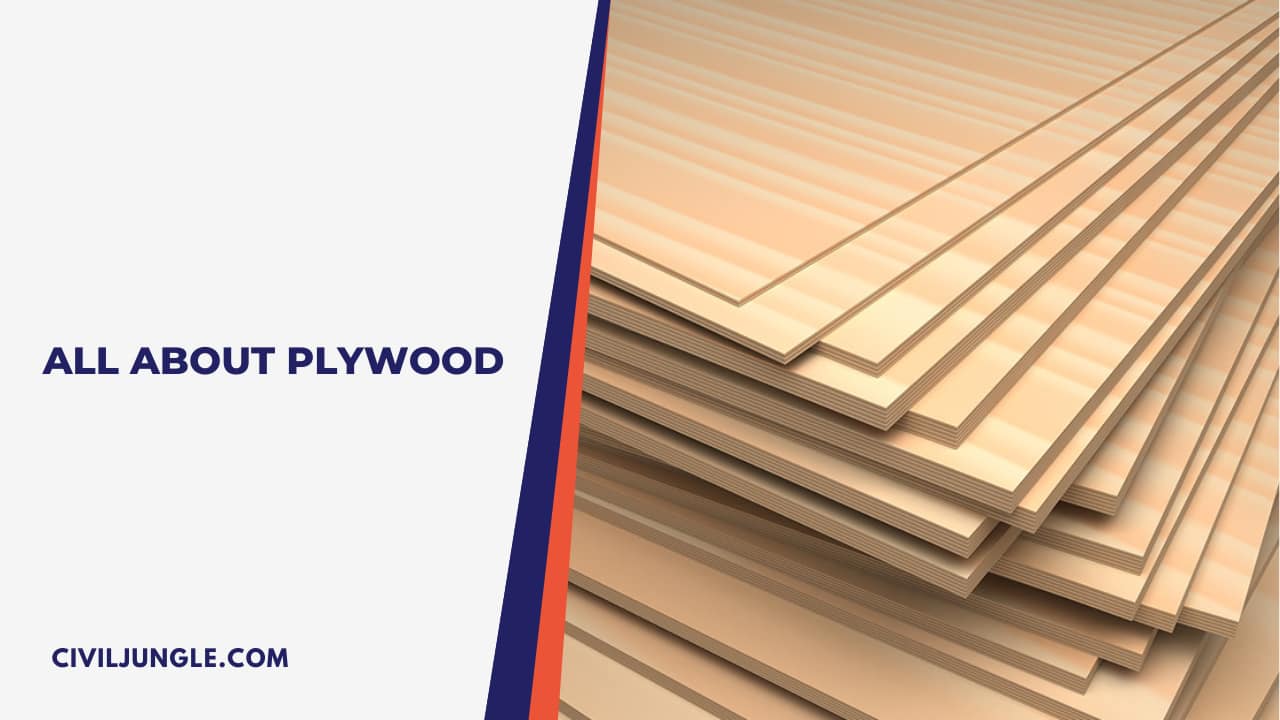
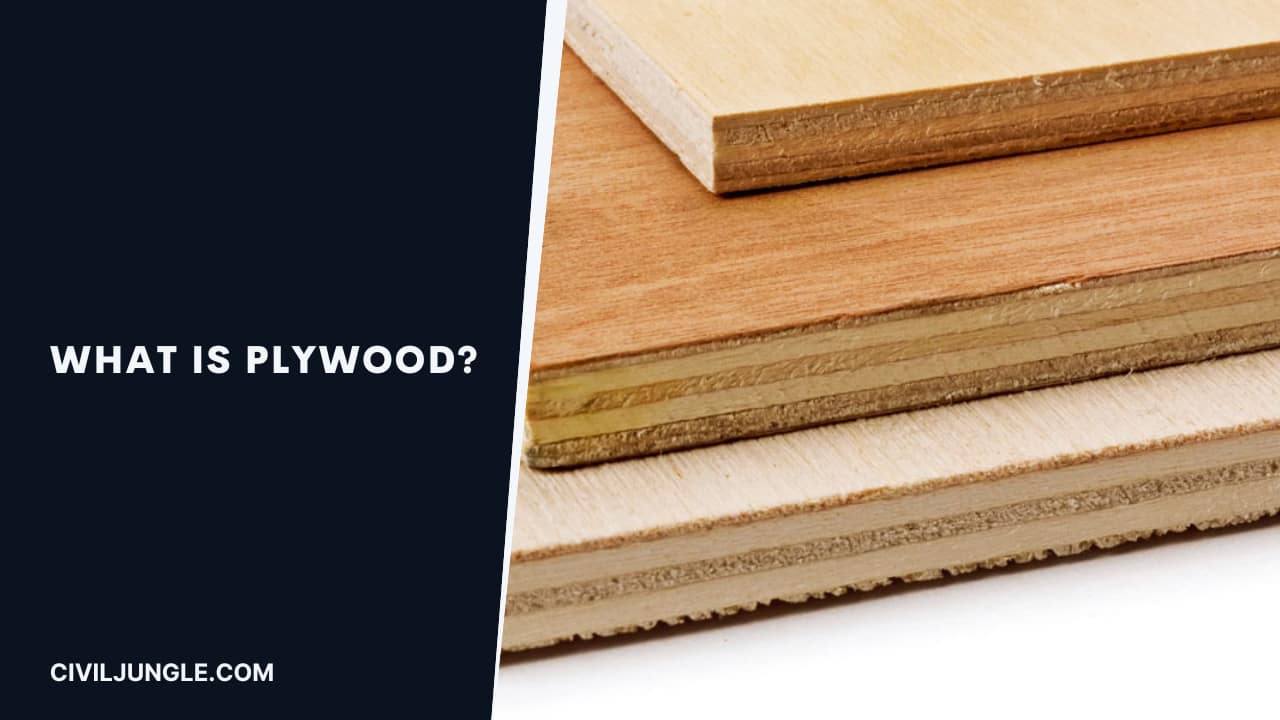
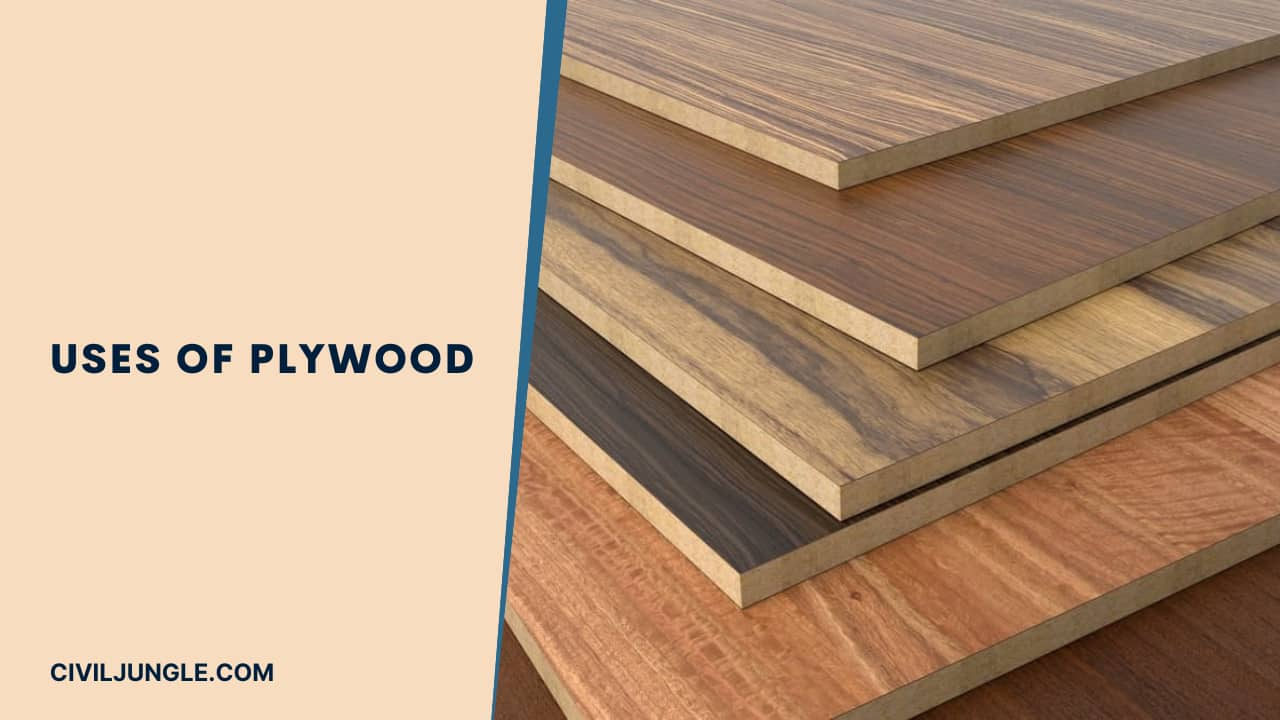

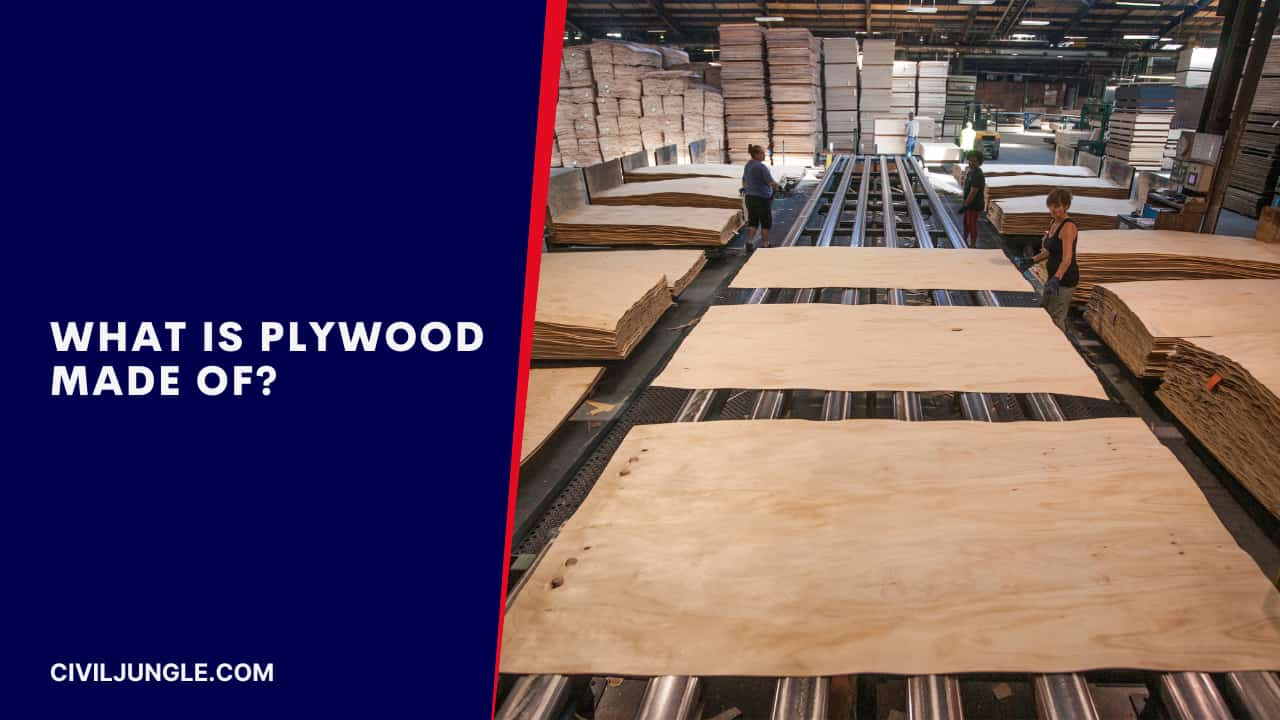
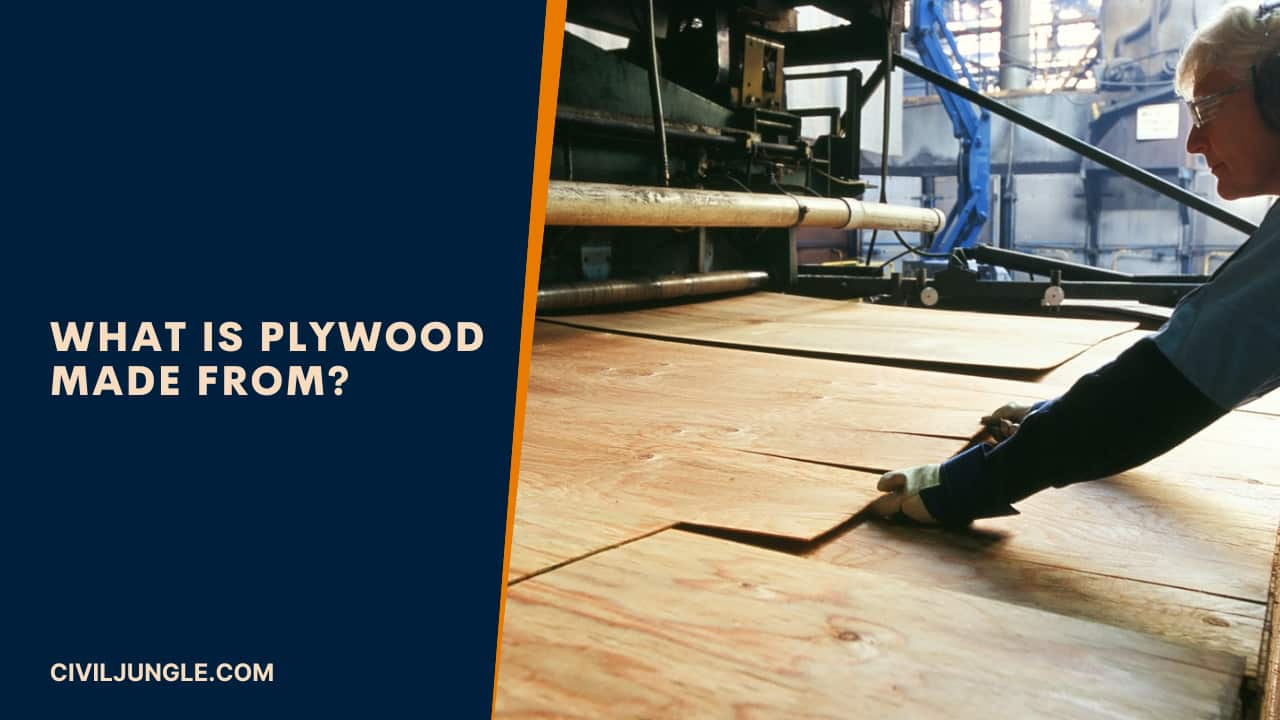
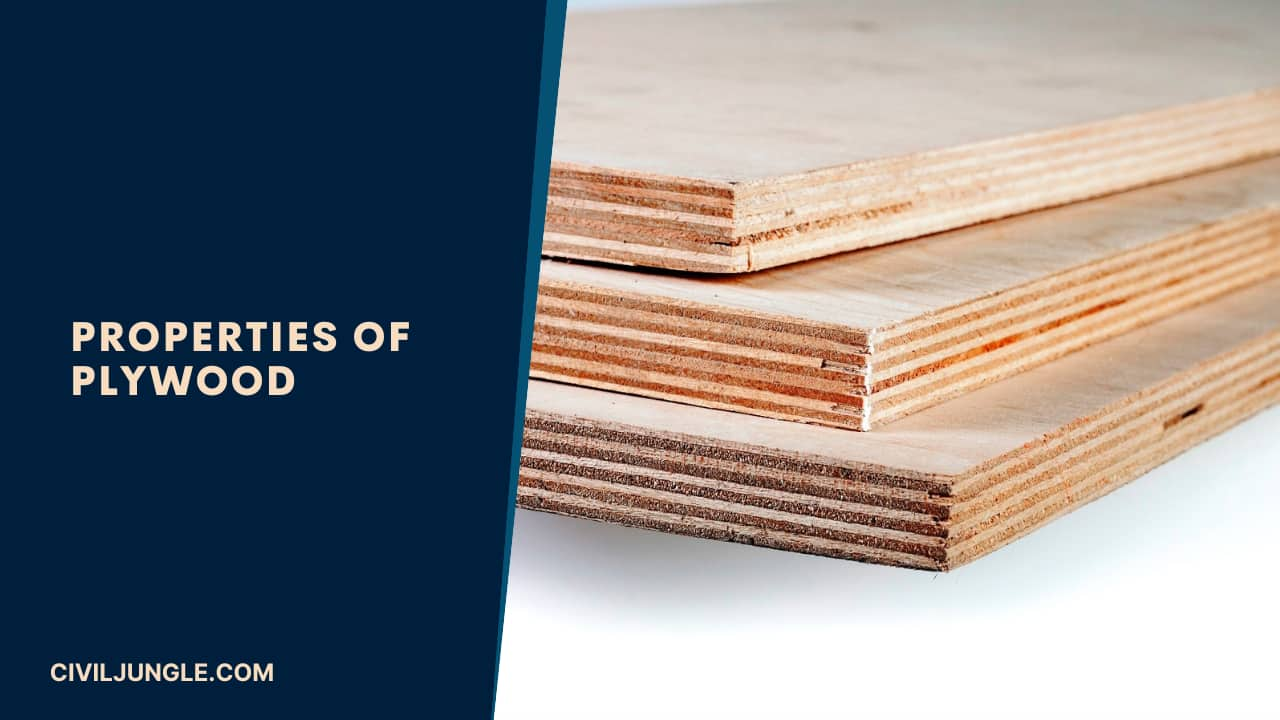
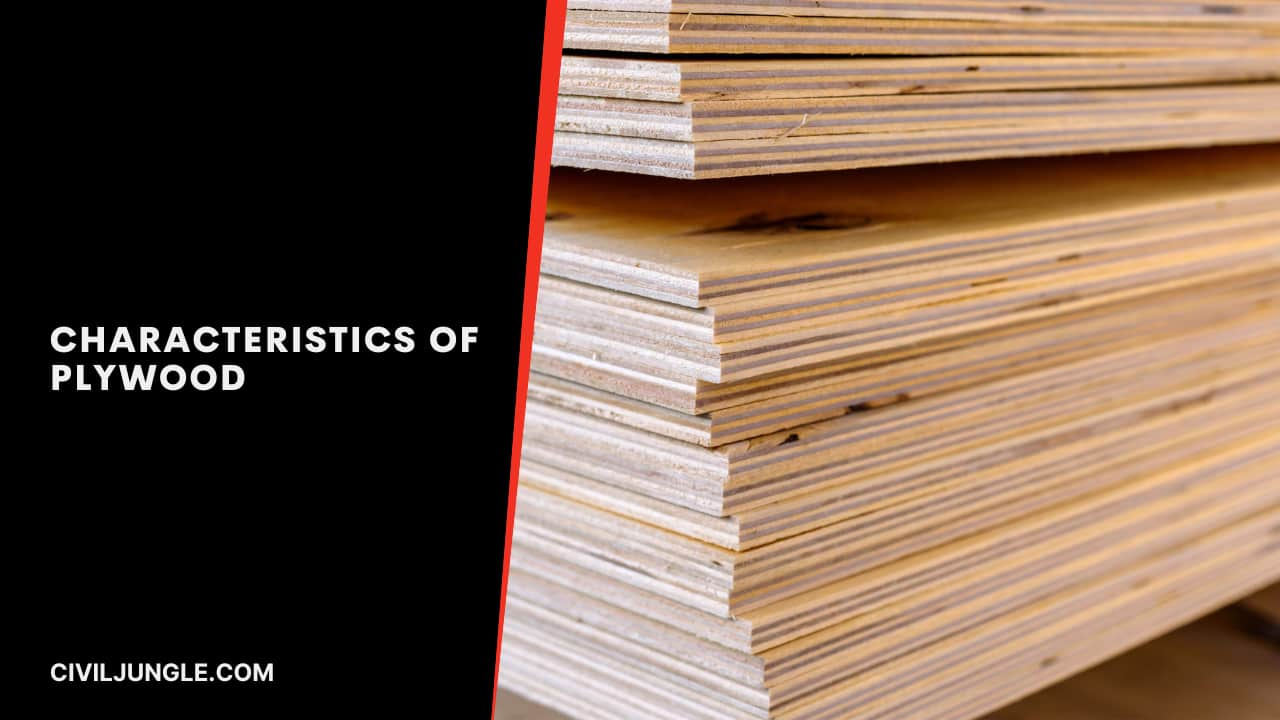
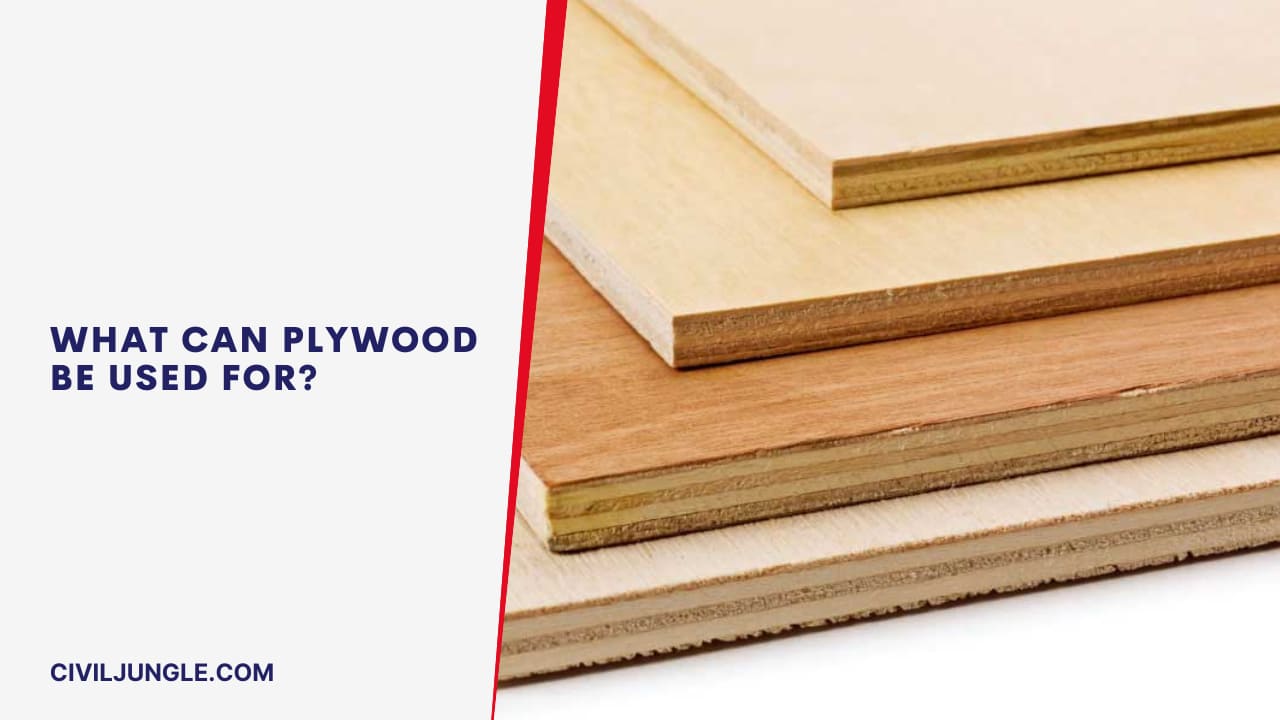
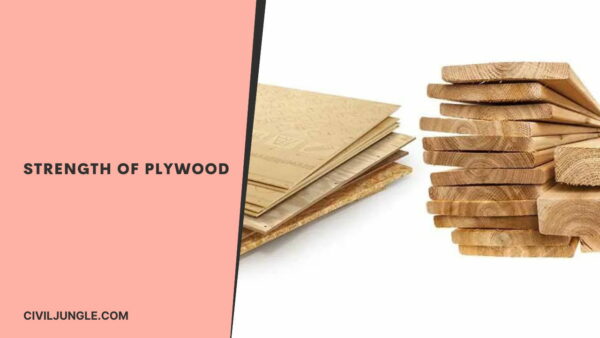
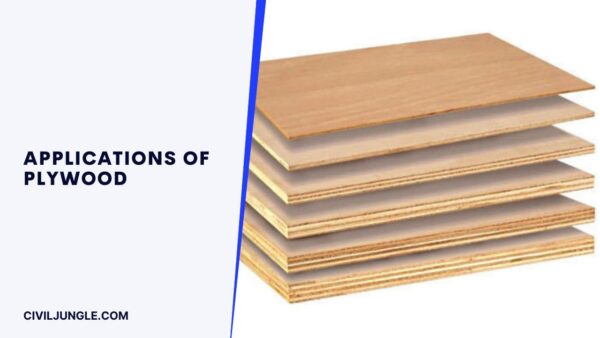

Leave a Reply